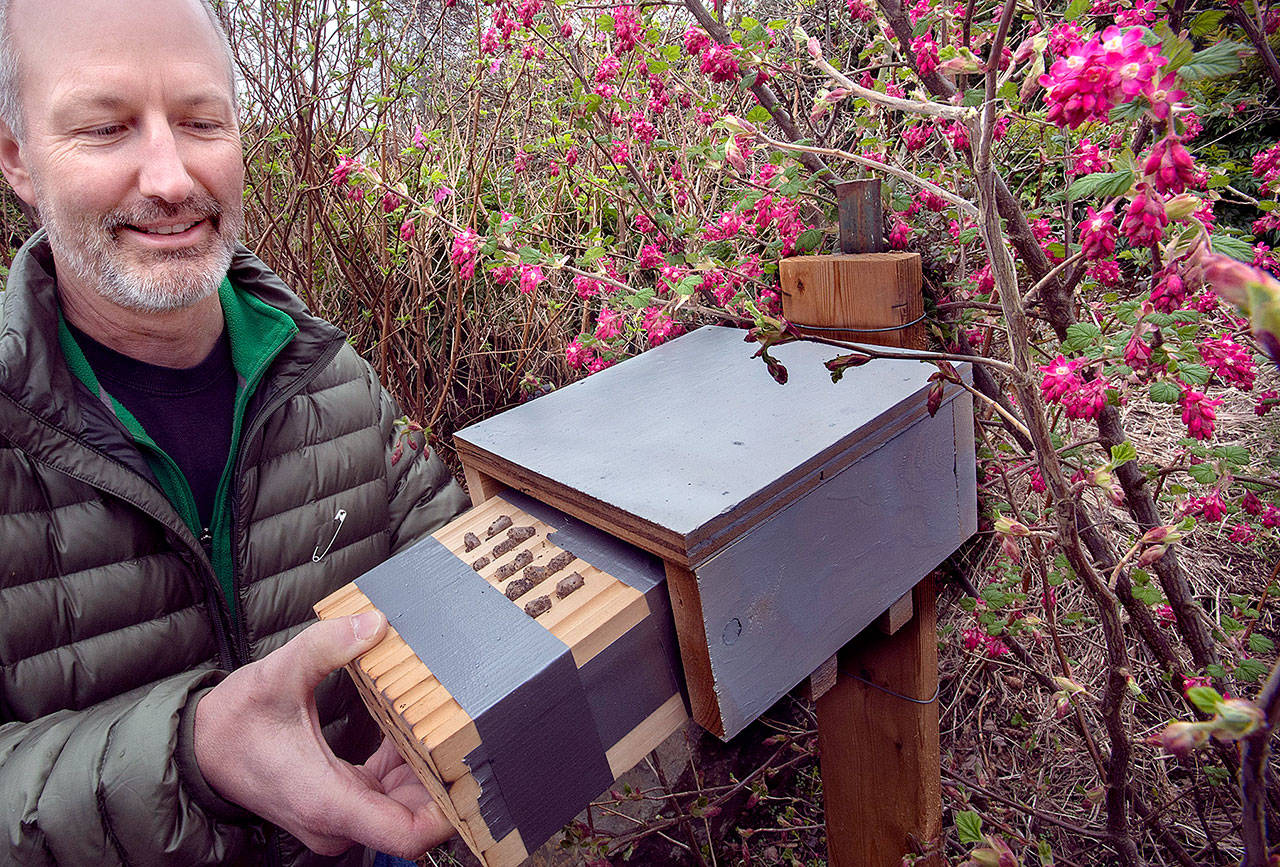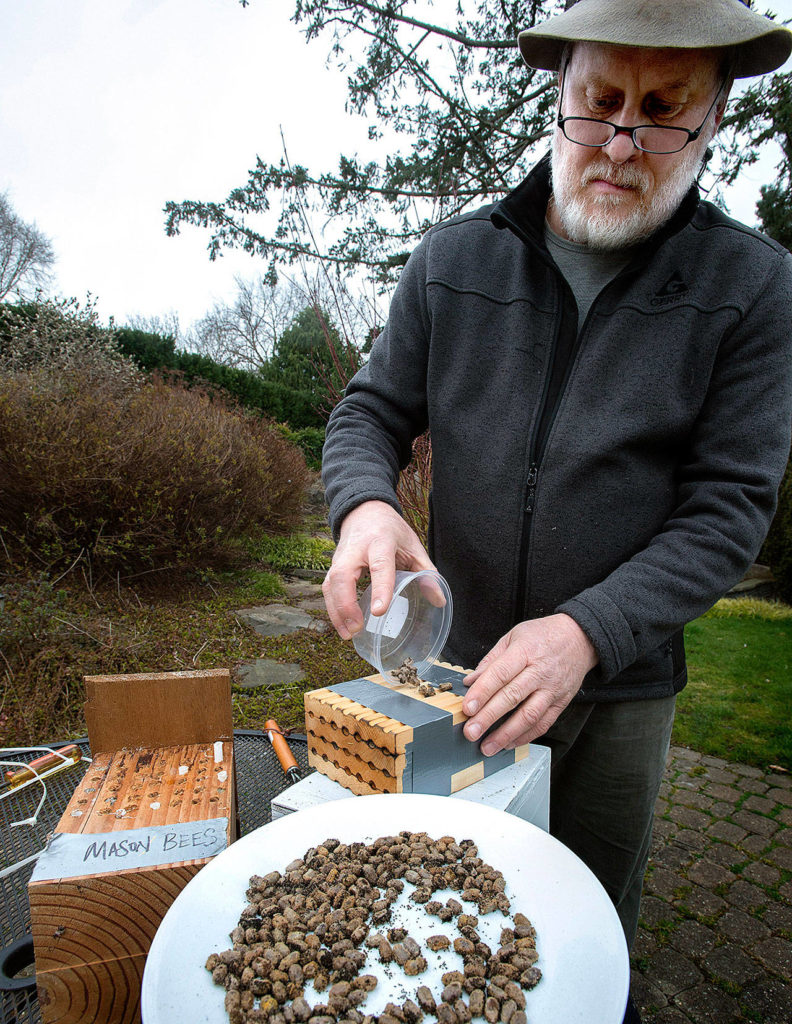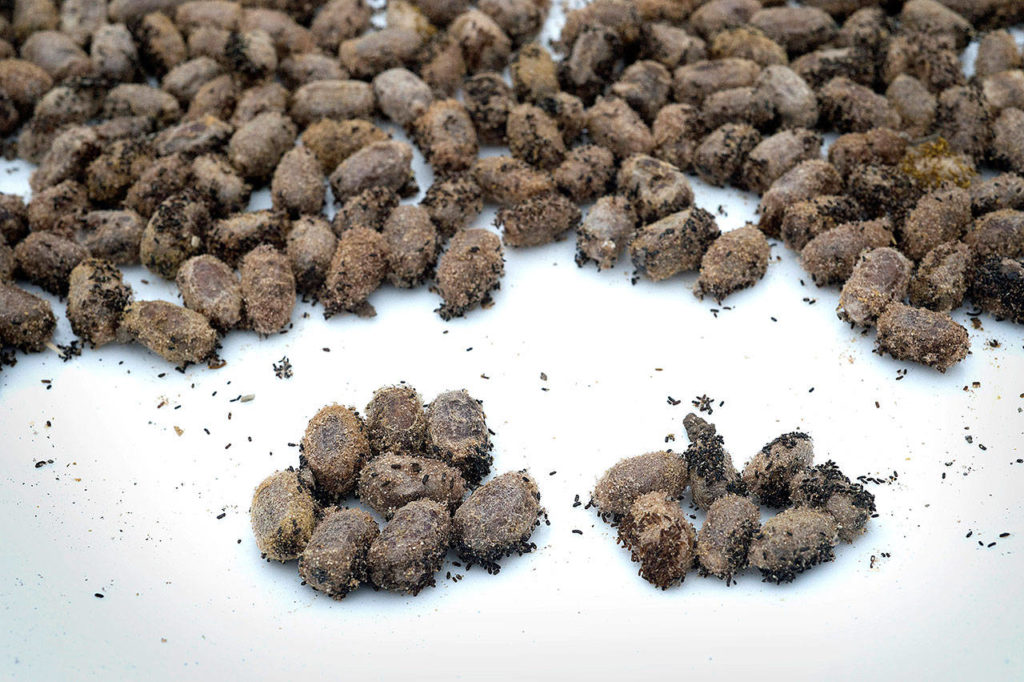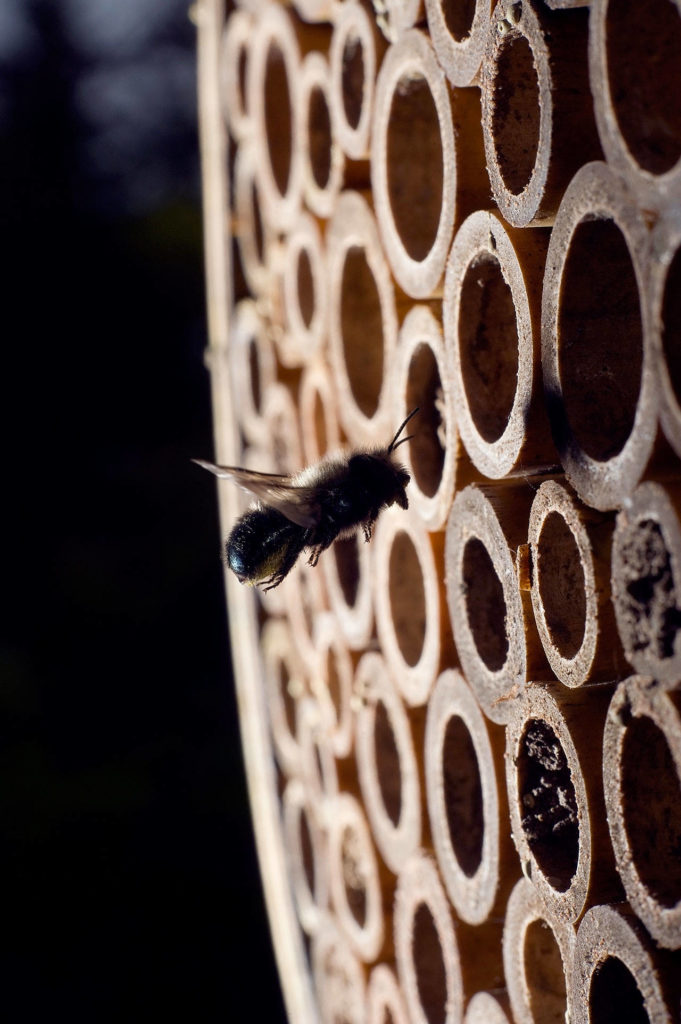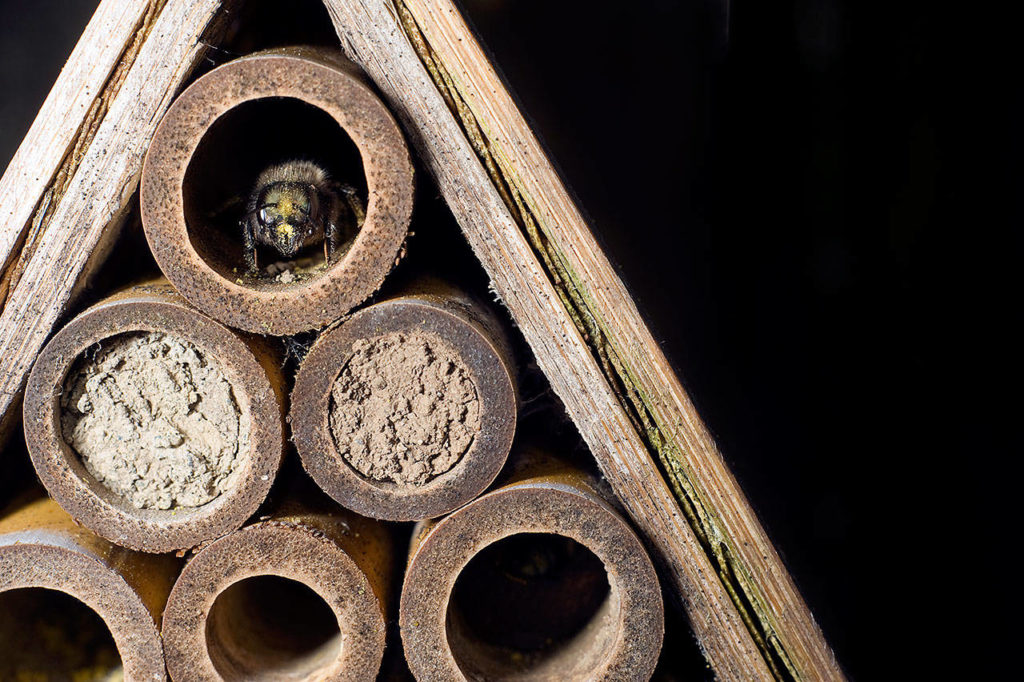By Rosemary Ponnekanti
The News Tribune
TACOMA — This spring you might want to welcome some apartment dwellers into your back yard. They’re peaceful (especially the males), they keep to themselves and don’t require much work from you. Oh, and they help produce most of the fruit you’ll eat this year.
Sold?
If so, it’s mason bees we’re talking about.
Native to North America, these blue-black bees are a whole different ball game from honeybees. They live in solitary “houses” rather than hives. They don’t have a queen or make honey, so they are far more docile. In fact, the males can’t even sting. And they hatch right about now to pollinate all spring fruit, berries and nuts, making them essential for people. Best of all, they’re ridiculously easy to keep in your yard.
“Mason bees are the most prolific pollinators,” said Robert Girvin, a Tacoma doctor who’s been keeping mason bees for four years. “They’re child-friendly, don’t sting and are easy to manage. It’s something easy you can do to improve the local environment.”
Backyard contractors
Supplying mason bee homes is a bit like working with contractors: You buy the materials, they do the work.
Without human intervention, they’d nest in hollow reeds fallen to the ground. After hatching and mating, the females lay one egg at a time along the reed, depositing pollen for the larvae to eat and walling them into separate “apartments” with mud — hence the name “mason.” The larvae grow, cocoon themselves, metamorphose into tiny bees and wait out the winter until it’s 55 degrees — coming-out time.
There’s no honey production; a mason bee’s life is all about making babies. And as the female collects pollen, she pollinates fruit and nut crops that flower in spring: apples, nectarines, cherries, pears, berries, kiwi, strawberries.
Mason bees aren’t suffering from the colony collapse disorder that’s threatening honeybees, which makes them even more crucial to human food production. But people can definitely give mason bees a helping hand and improve their own back yard crops at the same time by supplying the bees with houses.
Since mason bees nest in tubes, making a house for them is fairly straightforward. Commercial houses for sale in nurseries resemble birdhouses, with a space inside to stack cardboard tubes (also for sale) and eaves to protect the eggs from weather. Or you can make your own.
Girvin and his former neighbor, Wally Croshaw, have developed a system of wooden blocks, routered into tube-like runnels, that stack together and insert into a house, all easily removed and cleaned. At Tacoma’s Envirohouse, the mason bees live in a PVC pipe screwed to the outside wall.
Houses should be mounted on east-facing supports (fence, house wall, tree), preferably with overhanging protection from rain. They can go at any height, but eye-level makes it easy to watch the bees.
Place the cocoons inside the house when days reach 55 degrees and there are some spring flowers in your yard — and watch for the bees.
“It’s not challenging at all,” said Travis Valbert, owner of GardenSphere Nursery, who sells mason bee supplies and recently gave a workshop at the Envirohouse. “It’s very low key.”
Life in the fridge
One thing humans can do for mason bees is protect them from heat and predators.
In nature, mason bees would build nests in shady areas to cool the cocoons during the summer (winter cold doesn’t bother them). And in case a squirrel or bird gets hungry, the female bee deliberately lays her valuable female eggs at the back of the tube with a couple of sacrificial male eggs at the front.
But in a human-made bee house, you can remove the cocoons — dark brown peanut-sized lumps — in June and store them in the fridge until spring. Yes, the fridge. Just make sure they’re in a humidifier (sold in nurseries) or next to a tray of water.
It also helps to label the bee container, just in case you have hungry guests.
Or you can tie a mesh bag over the house and leave it in an unheated shed for the winter.
Before you put the bees out in spring, check on their health. If you see orange around the cocoons, it’s a sign of pollen mites: shake the cocoons out in a tray of sand. If the cocoons are dusty and disintegrate on touching, it’s a chalkbrood fungal infection: discard them. Thoroughly clean the house.
Ideally, Valbert said, you would supply new tubes every spring after the bees hatch and possibly scrub out the wood, soaking it in light bleach for 10 minutes to keep your bees healthy. But if you don’t do that, they’ll probably be just fine.
Mating and death
For a male mason bee, life is short and sweet. The males hatch first, look for food, mate and then die, leaving the female to build the house and raise the kids. The result of all that focus on reproduction is that if you keep mason bees, you’ll end up with a lot of them.
“I started out with 10 cocoons,” said Girvin, who did a GardenSphere workshop four years ago. “The next year I had 35. The year after that, 120. This year I have 360.”
That means mason bees can become a community activity. Girvin and Croshaw (who had around 500 cocoons this year in his own houses) make wooden mason bee houses and give them to community gardens and neighbors, with Girvin donating dozens of cocoons back to Valbert for the Envirohouse workshop.
Girvin’s bees also have spread around his neighborhood.
In particular they love nesting vertically under house shingles — not a safety issue, since they rarely sting and don’t induce anaphylactic shock.
In return, everyone benefits from the added pollination and ecosystem support.
Bee-friendly yards
Of course, mason bees — like all bees — need food, and while they can fly up to 4 miles to forage, they reproduce better if they don’t have to work so hard. Food for mason bees includes pretty much anything that flowers in spring, Valbert said: daphne, azalea, hellebore, forsythia, camellia, rhododendron. Native plants are particularly useful: Red-flowering currant, mahonia, salal and serviceberry all flower at the right time and will also help feed birds.
If you want to feed honeybees and bumblebees, too, plant flowers that bloom in summer: Yarrow, feverfew, Echinacea, penstemon, black-eyed Susan, lavender and salvia all supply nectar and pollen.
You can group them together, but if you plant them randomly, the bees still will find them, Valbert said.
The one thing you want to avoid is pesticides. Any chemical that kills insects will kill bees. Herbicides also can poison them.
And to help mason bees build their walls, keep a patch of mud near the bee house. A shallow plant saucer filled with clay soil and kept wet is best.
Keeping mason bees isn’t much work, and it’s well worth it.
“Mason bees could save a lot of our food production,” Valbert said.
“People can feel powerless with so much going on around us in the world,” Croshaw added. “This is one way you can help.”
Talk to us
> Give us your news tips.
> Send us a letter to the editor.
> More Herald contact information.
